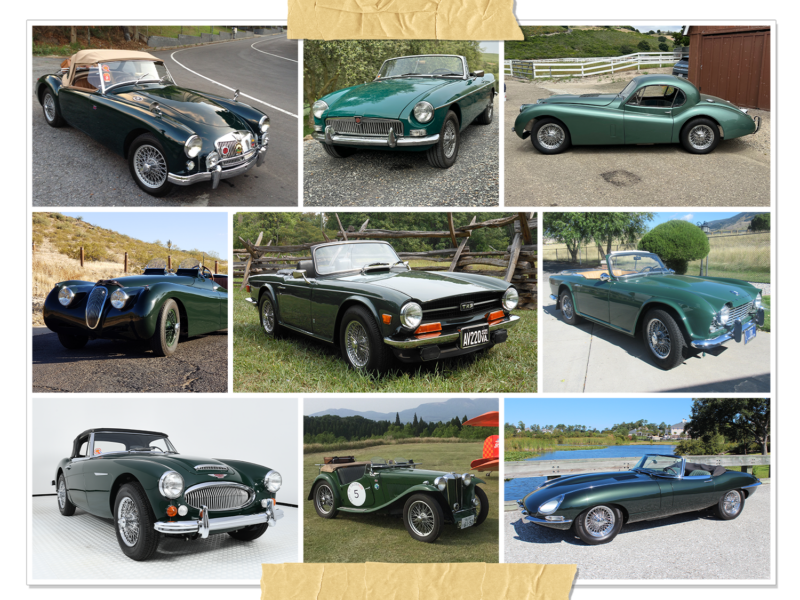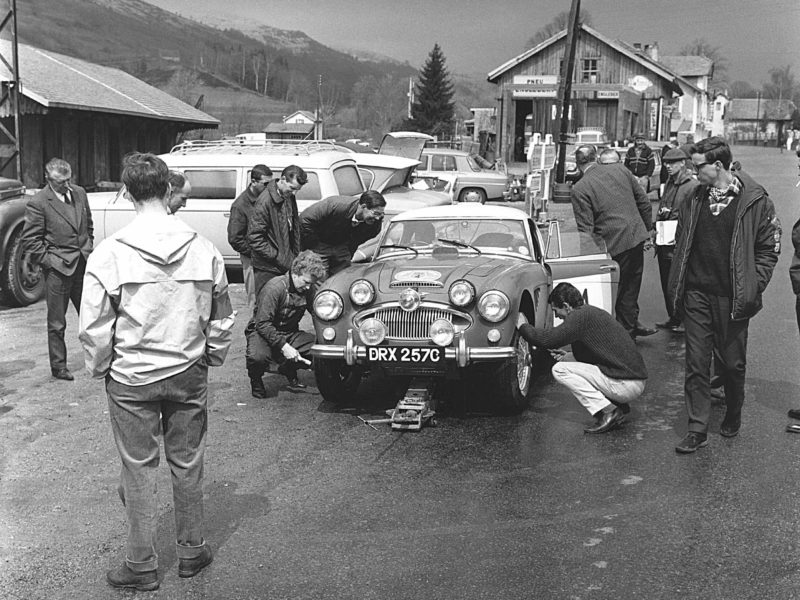In the Fall 1993 issue of Moss Motoring we introduced Doug who is a long time MG enthusiast,and we began a series of articles on the history and development of the MG motor car from its earliest days. When we last left Doug he had just introduced us to a young chap called Cecil Kimber, known to his friends as “Kim”.. Doug continues.. Hired as Sales Manager for the Morris Garages by William Morris, Kimber worked in this capacity for only a year, and was then handed the job of General Manager following the unfortunate demise of his immediate predecessor. Kimber was a mix of various types of personality, he was artistic and also interested in speed. He was small of stature and as a result of crashing on a motor cycle prior to joining Morris, walked with a limp. He was very competitive, independent and tremendously determined.
He soon began improving upon the Morris cars he had on the showroom floor, and while no records have survived, they were always mote pretty than the original Morris products and frequently featured aluminum bodies. These were all “one-off” products but in 1923 Kimber built six two-seaters, the first “production run” if we can call it that! These open 2 seaters were built on the Morris “Cowley” chassis for in those days Morris had two bread and butter models. The Cowley was the economy model, while the up market version was named the “Oxford”. Morris always used the names of local places for his cars.
The bodies for these cars were built by Raworths of Oxford, and so were known as Raworth’s (pronounced RAY-worth! -Ed.) while the engine was a stock Morris unit of 1548 CC with a three speed gearbox and wet cork clutch. Typically the car only had brakes at the tear! Kimber also brought color to these early MGs following the Blacks, Dark Greens and Dark blues of the period. Kimber introduced pastel shades, in fact one car was a rich Butter color, a complete departure from the norm.
Introducing the 14/28
In 1924 another new car, the 14/28, was introduced. Again it was based on a Morris Oxford chassis, and until 1926 when it was withdrawn some 400 were built. By now Morris had a number of garages around the Oxford area and a batch of chassis would be ordered, picked up from the Morris factory and then driven to one of the garages to be completed. One of the garages frequently used was on Edmund Road in Oxford. This garage was quite small and Cecil Cousins eventual General Manager of MG used to tell the story of having to move some of the chassis out into the street so that room could be made to work on the rest!
These cars were titled the 14/28 Super Sports but they still had the Morris badge on the radiator which was quite an elaborate affair known as the “Bull Nose” and in the early years were made of brass, but were later nickel plated. The 14/28 designation deserves some comment here. The first figure-14 indicated rated horse power. For years the road tax in England was rated at one Pound (sterling) per horsepower. The 2S indicated “developed” horsepower but it must be admitted that MG were not above being economical with the truth when it came to developed HP figures! The engine was a four cylinder side valve (flat head) with a capacity of 1802 CC and had again a three speed gearbox with wet clutch. There were various bodies including open two and four door models and also closed types.
I remember seeing these on the King’s highway, in England,and can recall seeing the open types with their aluminum bodies highly polished or finished above the belt line in either Claret (a deep Red) or a deep Blue. The raked windscreen and miniature ship’s ventilators on the scuttle (to bring cool air to the occupant’s feet!) were carried over from the previous models. The road wheels on the early models betrayed their low cost basis. These were “artillery” type wheels with thick spokes, and were made by Sankey. These ugly things were camouflaged on many models by fitting polished aluminum discs, but with the steering column lowered the car looked sleek and pleasant.
The performance was also pretty good for its day. Again relying upon my experiences with my father’s Morris Cowley, I would suggest a top speed of between 55 and 60 MPH. It was however known that some engines were “breathed” on! The pons were aligned and polished with “Brasso” a great metal polish and still available today. I should mention that these cars were still actually a product of the Morris organization and the name plates, the engine plates and all guarantees were from Morris Motors.
In 1926 there was another change of models from Morris and so the cars from the garages being modified by Kimber also had to change. The Bullnose’ was dropped and a flat radiator took its place. The “Flat Rad”, as it has always been called, bears some family resemblance to the later MG outline.
The old “Bull Nose’ had a narrow bonnet which swelled out to the firewall (or bulkhead). This did not occur with the flat rad-it was a sweeping line from the back of the radiator to the front doors.
There were about 900 of these cars produced until late 1929, the designation was changed to 14/40 and they were fitted with bolt on wire wheels. It is believed the engine actually produced about 35 horsepower instead of the 40 claimed in the car’s type number. However it was on this car that the MG initials found in an octagon were first seen being stamped out of sheet metal and mounted on the radiator mesh. The badge on the radiator still proclaimed Morris “Oxford” and these cars were still being guaranteed by Morris. Wc still did not have an MG Car Company, but it wasn’t far away!
By Doug Beagley, Los Angeles, CA







'Origins of the MG Car Company' has no comments
Be the first to comment this post!